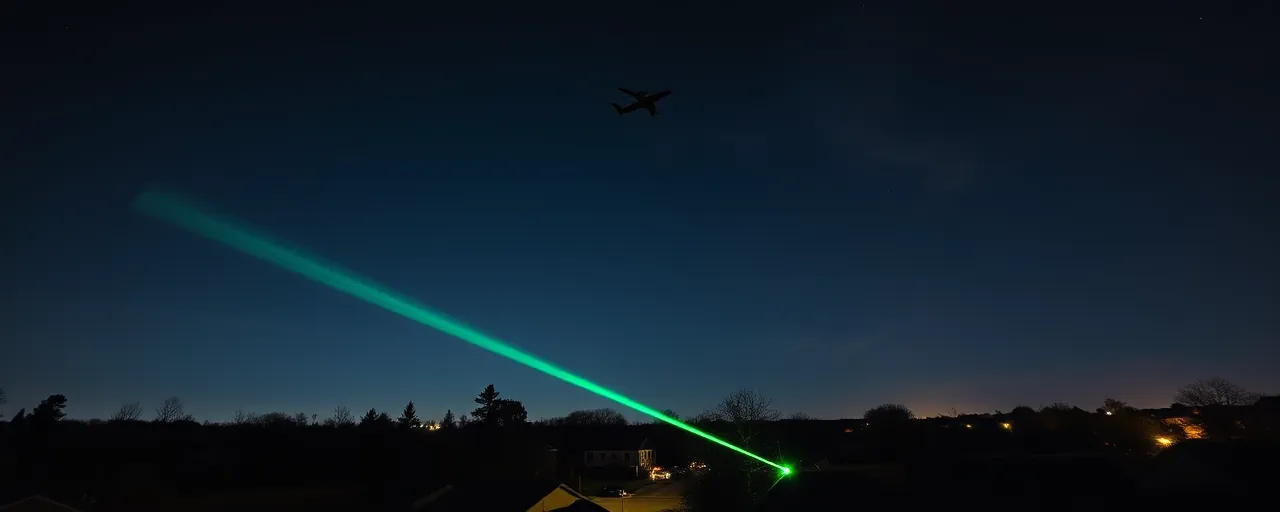A Persistent Threat Overhead
Last year, pilots across the United States reported 12,840 incidents of lasers being aimed at their aircraft, according to the Federal Aviation Administration. That figure marks a 3 percent dip from the 13,304 cases logged in 2023, offering a glimmer of relief in an ongoing battle against a startling safety hazard. Yet, the numbers remain stubbornly high, and each incident carries the potential to disrupt flights carrying hundreds of passengers.
The act of pointing a laser at an airplane is not a harmless prank; it’s a federal crime with steep consequences. Pilots have documented 328 injuries since tracking began in 2010, ranging from temporary blindness to lingering visual distortions. With commercial flights crisscrossing the nation daily, the stakes are tangible, affecting not just those in the cockpit but everyone on board.
Hotspots and Patterns
Certain states stand out as trouble zones for laser strikes. California topped the list in 2024 with 1,489 incidents, closely followed by Texas at 1,463 and Florida at 810. Other states like Tennessee, Illinois, and Arizona also saw hundreds of reports, often tied to bustling urban areas or busy airports. Nighttime proves the prime window for these events, when lasers cut through the dark with stark visibility.
The FAA’s data paints a vivid picture of where and when these risks spike. Cities with dense populations or major flight paths naturally see more activity, while factors like easy access to powerful handheld lasers fuel the problem. Pinpointing these trends helps authorities focus efforts, but the sheer scale of incidents suggests a deeper challenge in curbing the behavior.
Penalties Pack a Punch, Yet Gaps Remain
The penalties for shining a laser at an aircraft are severe. Offenders face FAA fines of up to $11,000 per incident, climbing to $30,800 for repeat violations, alongside federal charges that could mean five years in prison and a $250,000 hit to the wallet. Local and state laws often pile on additional punishment, signaling a no-tolerance stance. Still, the drop from 2023 to 2024 was modest, raising questions about whether the threat of punishment alone can stop the trend.
Enforcement remains tricky. Advanced tools like the Laser Aircraft Strike Suppression Optical System, or LASSOS, can track a laser’s origin in seconds, guiding police to the source. But catching culprits in the act is no small feat, and some argue the widespread availability of cheap, high-powered lasers outpaces deterrence efforts. Advocates for stricter sales regulations point to this gap, while others stress the need for broader public awareness to shift attitudes.
Safety on the Line
For pilots, a laser strike is more than an annoyance; it’s a jolt to their ability to fly safely. The bright beams can cause flash blindness or disorienting glare, especially during takeoff or landing when focus is non-negotiable. A recent Delta Air Lines flight approaching Boston dodged disaster after a strike, landing without incident, but the Air Line Pilots Association warns that luck may not always hold. No crashes have been directly linked to lasers, yet the risk looms large.
Technological fixes are in play, from laser-proof eyewear for pilots to cockpit shields that blunt the impact. These innovations show promise, but they come with trade-offs like cost and practicality. Helicopter crews, flying lower with bigger windows, face heightened exposure, amplifying the urgency to tackle the issue from multiple angles.
Looking Ahead
The FAA isn’t standing still. Beyond fines and tech, the agency pushes for public reporting of laser strikes and shares detailed data to spotlight the problem’s scope. Past efforts, like an FBI reward program in 2014 that slashed incidents by 19 percent in some areas, hint at what targeted action can achieve. Expanding education, especially in high-risk states like California and Texas, could chip away at the numbers further, supporters say.
What’s clear is that laser strikes aren’t fading fast enough. Each flash in the sky tests the balance between safety and the limits of control in a vast, busy airspace. For passengers boarding flights or residents near airports, it’s a reminder of how small actions on the ground can ripple upward, demanding a response that’s as persistent as the problem itself.
